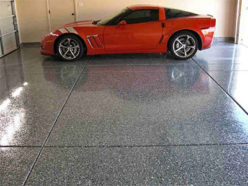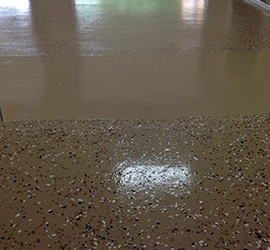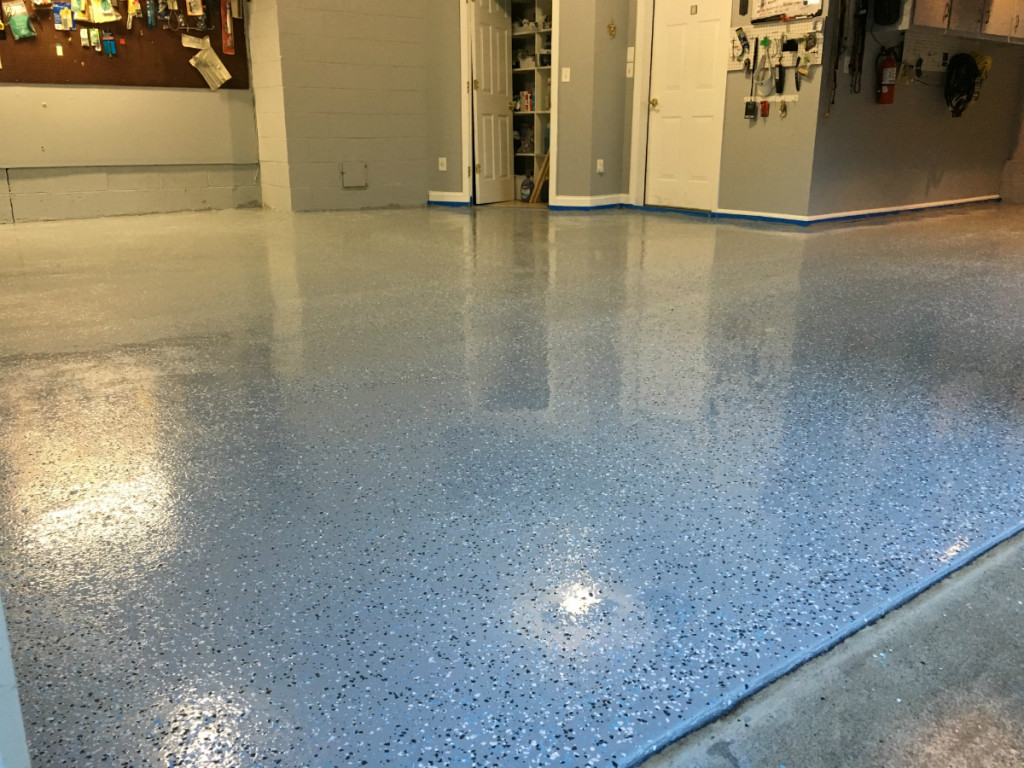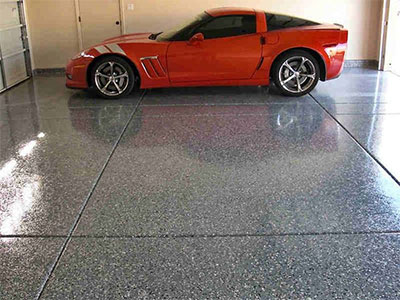TOPCOAT APPLICATION
When applying a topcoat first make sure the epoxy is cured. If you apply the topcoat before the epoxy is completely dry it will end up looking like the image below. Very easy to avoid this, just be patient and let the epoxy dry.

To test if the epoxy is fully dried or not simply press your finger into the epoxy, it should not leave a fingerprint. Next press your fingernail into the epoxy it should be difficult to leave any sort of an imprint. If the epoxy is not completely dry you need to give it more time and or more heat. In the cooler weather overnight temperatures that go below 55 degrees can slow the curing process down. So if your epoxy is a little tacky and the temperature dropped overnight add some heat to the floor and give it more time. This usually solves the issue. Normally we don’t want you going more than 20 hours between epoxy and topcoat but in this instance its ok cause the epoxy has not fully cured yet.
Always use a a roller pan when applying your topcoat this will ensure you don’t get any dull spots from too much nonslip in the spot you poured the topcoat out. Keep the topcoat stirred to keep the nonslip suspended. Another method for the nonslip additive is to broadcast it onto the epoxy and then roll the topcoat over it. When doing this again you want to avoid heavy blotches of the nonslip that can dull the finish of the topcoat. In the picture above you can see the topcoat was applied perfectly as the good areas have an even high gloss. It was just applied too soon. If you do happen to get a small dull spot, it’s easy to fix just lightly sand the topcoat with 100 grit, wipe off the dust and brush on some more topcoat. Don’t worry about scratching the epoxy, the topcoat makes all the scratches disappear.
Typically an epoxy needs 8-10 hours at 75 degrees, as the temperature drops it takes longer to cure. Your topcoat should cure in about 5-6 hours where you cna walk on it and put your stuff back on the floor. However, even though the topcoat is dry to the touch does not mean it is fully cured/hardened. That can take another 48hrs so no heavy traffic till then.
So in cooler weather make sure the floor stays warm overnight while the epoxy is drying and not just during the day. A good trick is to heat the space for a few days prior to doing your job this way the concrete can absorb as much heat as possible and will stay warmer than the ambient air while you apply your epoxy.
And as always if you ever have any questions or concerns before during or after your project just give us a call or shoot us an email and one of our support team members will be happy to help you.

 This is a common question that has a few different answers. It depends on what type of vehicle you will be parking on your
This is a common question that has a few different answers. It depends on what type of vehicle you will be parking on your  Once the floor is properly prepared (see how to
Once the floor is properly prepared (see how to  So you’re ready to install garage epoxy flooring, but you’re not quite sure how to go about it. Don’t worry, you’re not alone! The first thing you need to do is make sure that you have the right materials, and that means buying a high quality epoxy flooring. Once you have it properly applied to your floor you will experience a number of different benefits. Most notably, your floor is going to look a lot better than it did as just bare concrete.
So you’re ready to install garage epoxy flooring, but you’re not quite sure how to go about it. Don’t worry, you’re not alone! The first thing you need to do is make sure that you have the right materials, and that means buying a high quality epoxy flooring. Once you have it properly applied to your floor you will experience a number of different benefits. Most notably, your floor is going to look a lot better than it did as just bare concrete.